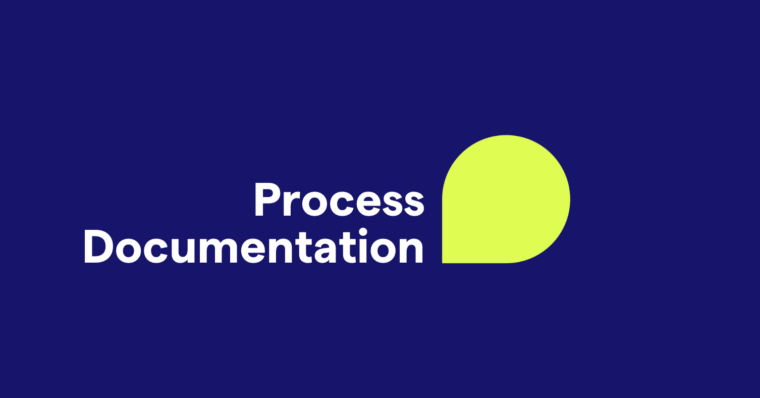
Making a personal connection with customers is a top priority for most businesses, but the question remains: how? Featuring a case study is a tried-and-true strategy for showing how your product or service works so potential customers can see themselves using it with real-life examples.
But what is a professional case study and how do you write one? This guide covers what they are, when they’re useful, and how to make one yourself. We even share an example of a professional case study or two that you can use as a guide.
What is a professional case study?
A professional case study is a piece of marketing material that tells a true story about how a product or service benefited a customer. Marketers use these article-length stories to make their product or service more desirable, both by explaining how they work and presenting evidence that proves how effective it is. A professional case study can be any length or format as long as it sticks to the main theme: a true story of a customer using your product or service successfully.
The term professional case study is co-opted from a research case study, a method of experimentation that focuses on one specific case rather than multiple cases of larger sample sizes.
Benefits of a case study
Do you need a case study? It depends on your business and branding goals. If you struggle with any of the areas discussed below, adding a case study to your website, social media, or other public outreach might help.
Social proof
Case studies work great for social proof, especially if you have a high-profile client or customer. Social proof shows customers that their peers already enjoy your products or services, as a way to assuage their fears or hesitations. There’s a lot to be said about the psychology of social proof, but in a nutshell, people are more likely to buy a product or service that they perceive as popular.
Answering customer questions
Each customer has their own unique questions or concerns, and it’s hard to anticipate them all in marketing copywriting. A case study can inadvertently answer or address some of these issues just by explaining how the product or service works.
Establishing expertise
Typically case studies demonstrate your business at its best, effectively solving a problem for the particular customer featured in them. This helps the customer perceive you as an authority, which goes on to illustrate why your product or service can genuinely benefit them.
Demonstrating the process
If a customer knows exactly what to expect from a purchase, they’re more likely to buy. A professional case study outlines the process of your business, either showing the steps of a service or the proper usage of a product. In both scenarios, the case study lays out a clear series of actions or events so the customer can imagine what doing business together would be like.
Case study vs. white paper
A case study is often mixed up with a white paper, another popular marketing document. Although the two share similarities, they are individually two distinct types of copywriting.
While a case study is a true story about a particular customer, a white paper is a general piece of writing that explains and instructs on a topic related to a company’s industry. White papers are used in lead generation to attract new customers and get a company’s name out there. Typically users must submit their email address before accessing a white paper.
How to write a professional case study in 7 steps
1 Define the goals for the case study
You can write a professional case study from any angle to highlight any aspect of your business, making them open-ended. That’s why your first step should be defining the case study’s goals, so you know which direction to go in.
A professional case study can be a call-to-action, a supplemental advertisement, or even a how-to guide. It can also highlight your company’s strengths, influence how your brand is perceived, or address common complaints and concerns. Before you start writing, think carefully about what you want your case study to accomplish.
2 Choose a case that best satisfies your goal
Once you know the main goal of your professional case study, you can find the “case” that fits best. Naturally, choose a success story that shows your business in the most flattering light—but which success story depends on what you want to talk about.
Pour through some old clients or customers to see if any of their cases inspire you. Consider not just the facts but also your relationship with that customer; you’ll need to ask their permission to share the story.
3 Identify the problem and solution for the case
The two most important parts of a case study are the problem and solution. You want to choose a story with a common problem that many readers can relate to, and a solution specific to your company’s product or service.
Writing a problem statement can be a good start, as it communicates the problem clearly and concisely. Consider your market research and the kinds of problems most of your target audience share.
The solution should fall in line with your value proposition, a short statement about the benefit your products or services offer. In fact, including your value proposition somewhere in the case study is highly recommended.
4 Reach out to the client/customer for a testimonial
Including a testimonial is always a good idea for professional case studies. For one thing, seeing a quote in the actual words of a customer enhances the social proof. Moreover, it verifies that the story is, in fact, true.
It’s good to reach out to the customer early on, since they will likely need some time to respond. In addition to asking their permission to tell the story, request a quick testimonial that highlights your business. Reassure them it doesn’t need to be long—just a blurb of two or three sentences will suffice.
5 Draft an outline for the case study
Case studies use the same format for how to write an outline as other texts, just modified for your business goals. Plan out which sections to include and what specific details to mention, such as where to include your problem statement, value proposition, customer testimonial, and figures and data.
Sections are key in professional case studies as a way to break up long lines of text into digestible morsels (we use the same principles for professional blog writing). Typically, you can include a section for each stage of the process, such as “meeting with the client,” or “conducting market research.” Even simpler, use basic sections for just the problem and solution.
Specifically, it helps to open with a section introducing the customer (who they are and what they do) and the problem that your products or services eventually solve.
6 Write the rough draft of the case study
Writing the rough draft is just a matter of following the outline and including all the particular details and parts you planned beforehand. As with most first drafts, don’t worry too much about individual word choice or phrasing. You can perfect that later when you revise.
Collect plenty of figures and data to both encourage sales and verify your claims. If you’re struggling, you can also get assistance from AI copywriting. While AI technology is still too young to copy-and-paste AI-generated case studies without editing them, it can still help give you ideas for structure and phrasing if you’re stuck.
7 Edit and revise
With the rough draft finished, it’s time to move on to editing and revising. Now that most of the writing is done, you can now focus on the details, like word choice and phrasing, as well as making any structural changes (such as moving, adding, or deleting sections). When you’re finished with revisions and satisfied with your draft, the final step is proofreading to take care of any spelling and grammar errors.
Grammarly helps a lot in this stage. For one thing, even the free version can easily identify spelling and grammatical errors to make proofreading a breeze. You can use our free online grammar checker to see how it works. If you invest in Grammarly Premium, features such as full-sentence rewrites, tone suggestions, and word choice recommendations help to make your writing sound more professional.
Example of a professional case study
We understand the importance of professional case studies, so we posted our own on our website. Take a look at these examples of professional case studies that we use for our own marketing at Grammarly.
- How Zapier Built a Style Guide in Grammarly Business to Achieve Consistent Writing
- Lucid Scales Multilingual Customer Support Teams With Grammarly Business
- How Frost & Sullivan Cut Editing Time by 66%
- How HackerOne Builds Customer Trust With a Unified Brand Voice
Professional case study FAQs
What is a professional case study?
A professional case study is a type of copywriting that tells a true story about how a product or service helped a customer. Marketers use these article-length stories to make their product or service more desirable, both by explaining the process and presenting evidence that it works.
When should you use a professional case study?
The main advantages of a professional case study are social proof, answering customer questions, establishing expertise, and demonstrating the process of your business. If your company has issues in any of these areas, consider adding a professional case study to your website, social media, or other form of public outreach.
What’s the difference between a professional case study and a white paper?
While a case study is a true story about a particular customer, a white paper is a more general piece of writing that examines a specific topic related to a company’s particular industry. White papers are used in lead generation to attract new customers and to get a company’s name out there. Typically users must submit an email before accessing a white paper.





